MEDIA FOR CHANGE NETWORK
Ugandan Communities Say Total’s Oil Project Is More of a Land Grab than a Development Opportunity
Published
6 months agoon
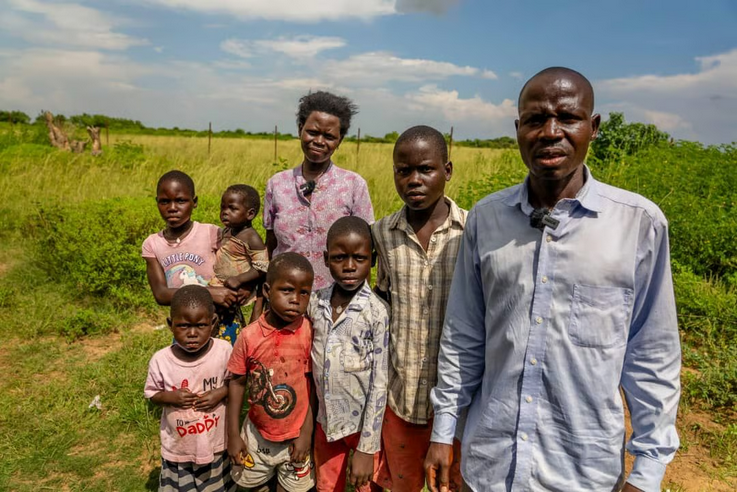
Fred Balikenda and his family were forcefully evicted from their home in Kirama village, Buliisa district on May 13, 2024 to make way for the Tilenga project. Photo by Diana Taremwa-Karakire.
When Jealousy Mugisa Mulimba, a 52-year-old father of nine in Uganda’s oil-rich Buliisa district, was informed he would need to move his family from his ancestral home because French oil giant TotalEnergies needed his three acres to build their central processing facility in the region, he was reasonable. He didn’t put up a fight. Instead, he asked that the company give him three acres nearby; somewhere out of the way of the facility, but still near the place he’d always called home, the health facilities he and his family rely upon, and his kids’ schools.
He was instead shown land far away, isolated and distant from everything and everyone he’d ever known. After a five-year legal battle, a Ugandan court expropriated his land anyway in 2023, along with that of 41 other affected people.
“They are inhuman,” he said during a recent interview. “This is my land on which my ancestors are buried. I will not just leave like they want, I will continue fighting.”
Together with other affected people, Mr. Mulimba plans to appeal the decision of the Hoima court in Uganda’s high court.

A resettlement house built by TotalEnergies for project affected persons PAPS . Some PAPs have expressed concerns that these houses are isolated compared to the communal settings they were accustomed to. Photo by Diana Taremwa-Karakire.
Although the Ugandan government promises that oil projects will lift the country out of poverty and put Uganda’s natural resources to work for the betterment of Ugandan citizens, activists are concerned not only about the hundreds of millions of tons of carbon dioxide these projects will generate, but also about the more immediate impacts. These range from the potential for spills and the impact on animals and birds in biodiverse regions, to the way the country’s burgeoning fossil fuel industry is displacing various communities, bringing them not the promised riches of an oil boom, but sending them ever deeper into poverty.
Uganda first discovered commercial quantities of oil nearly 20 years ago, but it wasn’t until TotalEnergies and the Chinese National Offshore Oil Company CNOOC inked a deal to exploit the resources in the Lake Albert region in 2022 that the country’s fossil fuel industry began in earnest. The region, which lies on the country’s western border with the Democratic Republic of the Congo, is estimated to hold over 6.5 billion barrels of oil, with 1.4 billion barrels economically recoverable. TotalEnergies is the major operator for both the Tilenga oilfields, a $6 billion project covering Buliisa and Nwoya districts near the shores of Lake Albert, and the East African Crude Oil Pipeline, or EACOP, project that will transport that oil from Uganda to an export port in Tanzania. Other partners are CNOOC and the state-owned Uganda National Oil Company, as well as Tanzania’s state-owned Tanzania Petroleum Development Corporation.
Getting all that oil and gas to customers requires infrastructure, which is where EACOP comes in. The plan calls for a 900-mile pipeline stretching from the small town of Kabale, in western Uganda, to the Tanzanian port of Tanga. If completed, it will have the capacity to carry up to 246,000 barrels of crude a day to a storage terminal and loading jetty in Tanga. The waxy nature of Uganda’s crude will require the pipeline to be heated constantly for the crude to keep flowing. Experts say that this is the largest heated oil pipeline to be constructed.
Meanwhile, the Tilenga oilfields lie in one of not just Uganda’s but Africa’s most biodiverse regions. According to state environment regulator National Environment Management Authority NEMA, the Albertine region hosts 14 percent of all of African reptiles, 19 percent of Africa’s amphibians and 52 percent of the continent’s birds, as well as 35 percent of all of Africa’s butterflies and 39 percent of all African mammals.
The project includes the development of 6 oil fields and the drilling of about 426 wells, with 10 wellpads located inside Murchison Falls National Park, Uganda’s largest national park. It also includes an industrial area with a lake water abstraction facility and a central processing facility capable of processing up to 200,000 barrels of oil per day. Currently, the project aims to produce up to 190,000 barrels of oil daily to meet global demand. Drilling activities are ongoing at Tilenga with over 110 wells drilled so far.
Land Grab
The completion of the Tilenga and EACOP projects will not only displace animals, birds and amphibians, but also people. The projects require a land acquisition program covering some 6,400 hectares. This means relocating 775 primary residences, and affecting a total of 19,262 stakeholders, landowners, and land users.
TotalEnergies is responsible for overseeing the land acquisition process, including all administrative costs and compensation payments. However, the company contracted Atacama Consulting, a Ugandan firm, to carry out the implementation of this process.
While land and property rights in Uganda are safeguarded under Article 26 of the Constitution and the Land Act of 1998, the land acquisition process for these projects is guided by government-mandated Land Acquisition Resettlement Framework and Resettlement Action Plans (RAPS) that are part of assessments carried out by TotalEnergies. The compensation rates for land, permanent buildings, rates for crops and temporary structures are determined based on market analysis approved by the chief government valuer.
The Tilenga RAP stipulates that the project will re-establish the livelihoods of affected persons to an equal or greater level than before the project activities. Most of the land has been acquired from the 5,576 landowners or project affected people under the Tilenga project.
However, many of the people in question, like Mulimba, report unresolved disputes and claim that these projects have left them worse off than before, driving them deeper into poverty.
On December 8, 2023, the High Court in Hoima ruled that 42 households be evicted before compensation to make way for the Tilenga Project. The court allowed TotalEnergies to deposit compensation funds in court and take the land, even by force if needed. While the company made compensation payments after resolving disputes, many affected families still argue that the compensation was inadequate.
The Ugandan project, along with the vast natural gas fields of Mozambique, are at the center of TotalEnergies’s Africa strategy, which it says is to “develop responsible, low cost, low emission oil and gas production.” This strategy fits well into the plans of Uganda’s long-time leader, Yoweri Museveni, who has made the development of the $10 billion hydrocarbon industry a cornerstone of his plan to transform this impoverished East African nation.
At an event to announce the final investment decision for the $10bn project in February 2022, TotalEnergies chief executive Patrick Pouyanné said that he had travelled to Uganda more than any other country since 2018 to push through the project.
“The development of Lake Albert resources is a major project for Uganda and Tanzania, and our ambition is to make it an exemplary project in terms of shared prosperity and sustainable development. We are fully aware of the important social and environmental challenges it represents,” he said.
But allegations of rights violations to local communities have dogged the oil giant. Activists say the Tilenga project’s land acquisition process has been marked by delayed, inadequate and unfair compensation as well as the use of threats, intimidation, and other tactics to coerce many poor families into accepting bad deals for their land. This has led to resistance to the project’s efforts to fence off land in some areas, despite the company’s insistence that it sought consent and is following social safeguards.
“TotalEnergies has failed to respect the rights of local communities. It has failed to gain the informed consent of affected communities for the project as is legally required,” said Benon Tusingwire, the executive director at Navigators of Development Association NAVODA, a local rights group working in the project area. He also noted that officials from Atacama have been coercing and tricking affected people into signing consent forms for the acquisition of their land.
TotalEnergies did not reply to multiple requests for comment.
As the deadline for the production of first oil approaches, the actions of both TotalEnergies and government officials have become more aggressive, residents claim.
On the morning of May 13, 2024, Fred Balikenda (pictured in the photo at the top of this story), a local peasant farmer living on the margins of one of TotalEnergies oil wells, suffered one of the most brutal evictions to date. A group of gun-toting policemen in Toyota Pickup trucks bumped into the fenced enclosure of Balikenda’s home and ordered him and his wife out of their 4 bedroom house. As they waited in the yard, the officers, backed by around a dozen un-uniformed men, started demolishing the house.
Balikenda, along with other landowners, including Mulimba, lost the suit in April 2024 in which they had sought to halt their evictions. The Judge in Hoima city, near the oil fields, ruled that money meant for the expropriation compensation should be deposited with the court and that the government could evict locals so that TotalEnergies construction activities could go ahead.
“They threw out some of my belongings through the windows,” Balikenda said, gazing into the distance. “We are now living a life of destitution, we have lost so much land to the project and yet what we were being compensated isn’t equal to what is being taken. We no longer have access to community grazing land, all my cows and pigs have died.”
Even before this eviction, Balikenda was effectively living in an open-air prison for months after TotalEnergies fenced in his home and a 1-acre piece of land that he had refused to vacate before his replacement house was complete. His pigs starved to death because he could no longer get out of the enclosure to get them fodder, he says. Court is yet to rule on their appeal.
“We are really going through some of the roughest times,” Balikenda said. “Our families are traumatized”
The Petroleum Authority of Uganda, or PAU, the state regulator for the oil and gas sector, says that recent evictions of Tilenga affected persons followed the due legal process.
“The Tilenga Project prioritizes minimizing disruption to affected communities and ensuring that all PAPs [project-affected persons] are adequately compensate for their losses and inconveniences. Despite the comprehensive compensation and resettlement efforts, the final PAPs’ repeated refusal to relocate necessitated legal action by the government,” says a statement from PAU.
However, lawyers representing Balikenda and others insist that the court process was flawed. In a country where the justice system mostly rules in favor of the government, affected people remain helpless.
“If it were not for the harassment, intimidation, arrests, detentions and other threats that they face, they would never have accepted the low compensation,” said Tusingwire.
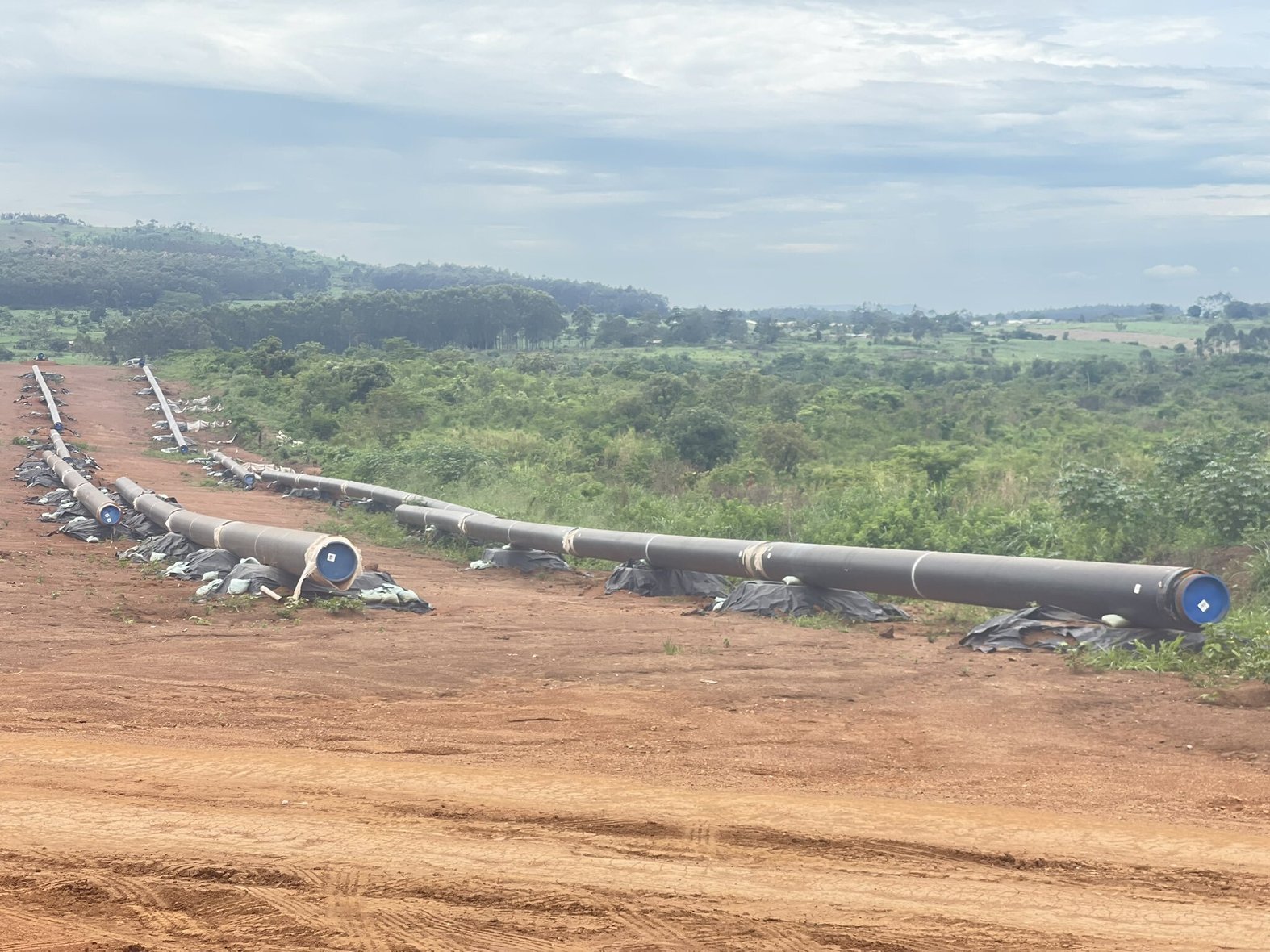
Pump Station 1 (PS1) of the East African Crude Oil Pipeline project in Hoima district, a critical part of the EACOP infrastructure, receiving crude oil from feeder pipelines from the Kingfisher and Tilenga oil fields and transporting it to port Tanga in Tanzania. Photo by Diana Taremwa-Karakire.
The Pattern Continues in Mozambique
More than 2000 kilometers to the south, TotalEnergies’ $20 billion natural gas project in northern Mozambique’s Cabo Delgado province was saved in 2021 by a well-timed donation from France to Rwanda, which was followed just a few weeks later by the deployment of some 2,500 Rwandan peace-keeping troops to fight Jihadist fighters in the region. The deployment happened months after TotalEnergies had declared force majeure on the project due to an offensive by Islamic State-linked insurgents.
The insurgency, which has been raging since 2017, is mainly spearheaded by angry young men who resent security force abuses and believe elites monopolize the region’s natural resources while local communities starve. As in Uganda, the company’s approach to land acquisition and community outreach has not served to quell that anger; relocation efforts have often resulted in the displacement of communities far from their traditional and familial roots, with farmers being moved to non-arable land or fishermen to new villages far from the sea.
Critics of the gas project argue that while the insurgency is rooted in Cabo Delgado’s complex political and religious history, so far Total’s operations follow a familiar pattern of extracting wealth from the province with little benefit to local residents.
According to the International Crisis Group, the insurgents are fighting for a “meaningful role in the Cabo Delgado economy, so they can benefit from the opportunities created by major mining and gas projects.”
TotalEnergies has been forced to shore up more security measures, signing a security pact contracting Isco Segurança, a security company backed by Rwanda’s ruling party, to secure the gas fields. But analysts believe that such security arrangements will not leave a lasting solution since the grievances are felt deeply by large sections of the region’s impoverished population.
“Thousands of Livelihoods Devastated”
A 2023 report by Human Rights Watch indicated that the EACOP project has devastated thousands of livelihoods in Uganda and risks locking in decades of greenhouse gas emissions, contributing to the global climate crisis. More than a dozen banks and insurance companies have shunned investment in EACOP, citing environmental and human-rights concerns.
With so many lenders on the sidelines, China has been willing to show support for the project. Last year, Ruth Nankabirwa, the Minister of Energy and Mineral Development, told state media that China would provide more than half of the $3.05 billion in debt financing needed, with smaller lenders taking up the rest of the slack.
According to the government, the oil industry is projected to bring a $40 billion boost to Uganda’s economy. When production is at its peak, the government will receive an anticipated $2 billion a year in revenue from the development.
Irene Batebe the permanent secretary at the Ministry of Energy and Mineral Development says that the government is committed to ensuring that the oil and gas sector is exploited without breaching environmental guidelines. Commercializing Uganda’s oil and gas will provide funds to spur development and investment in more renewable energy sources. The industry will also produce Liquified Petroleum Gas, which Batebe says will provide a cleaner cooking energy source and help to save crucial forest cover.Uganda is set to produce 100,000kg of liquified petroleum gas annually at the peak of oil production which is set to be used for cooking in homes, transport and heating.
From 2001 to 2023, Uganda lost 1.10 Mha of tree cover, equivalent to a 14% decrease in tree cover since 2000 according to figures from Global Forest Watch.
Forest cover has been shrinking at a rate of 15 percent each year over the past decade, due largely to the country’s over-reliance on charcoal and firewood for cooking.
“The real problem is not EACOP or fossil fuels , the real problem is, you have at least 57%of households having access to a source of electricity meaning the bulk of us are depending on rudimentary biomass,about 80% of our population is burning fuel wood and charcoal,” Batebe says.
But not everyone agrees on what constitutes “betterment” and for which people. In an interview, Dickens Kamugisha, the Chief Executive Officer of Africa Institute for Energy Governance, contends that the Ugandan government appears bent on maximizing proceeds from the industry without regard for Indigenous communities and the environment.
“The longer we wait to reduce emissions, the greater our collective suffering will be,” said Mr. Kamugisha , who spent weeks in detention in 2021 over charges related to his environmental advocacy work around EACOP “We must reduce and eventually eliminate our dependence on fossil fuels if we are serious about halting global warming.”
Source: drilled.media
Related posts:
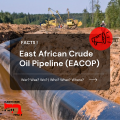
 EACOP: Another community of 80 households has lost its land to the government and Total Energies to construct an oil pipeline.
EACOP: Another community of 80 households has lost its land to the government and Total Energies to construct an oil pipeline.
 Former Benin PM to assess oil land compensation in Uganda
Former Benin PM to assess oil land compensation in Uganda
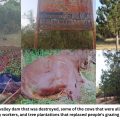 Profiting from misery: A case of a multimillion-dollar tree project sold off before resolving land grab and human rights violation claims with local communities.
Profiting from misery: A case of a multimillion-dollar tree project sold off before resolving land grab and human rights violation claims with local communities.
 “Our Trust is Broken”: Oil Pipeline Project Impoverishes Thousands
“Our Trust is Broken”: Oil Pipeline Project Impoverishes Thousands
You may like
MEDIA FOR CHANGE NETWORK
Seed Sovereignty: Most existing and emerging laws and policies on seeds are endangering seed saving and conservation on the African continent.
Published
2 days agoon
November 11, 2025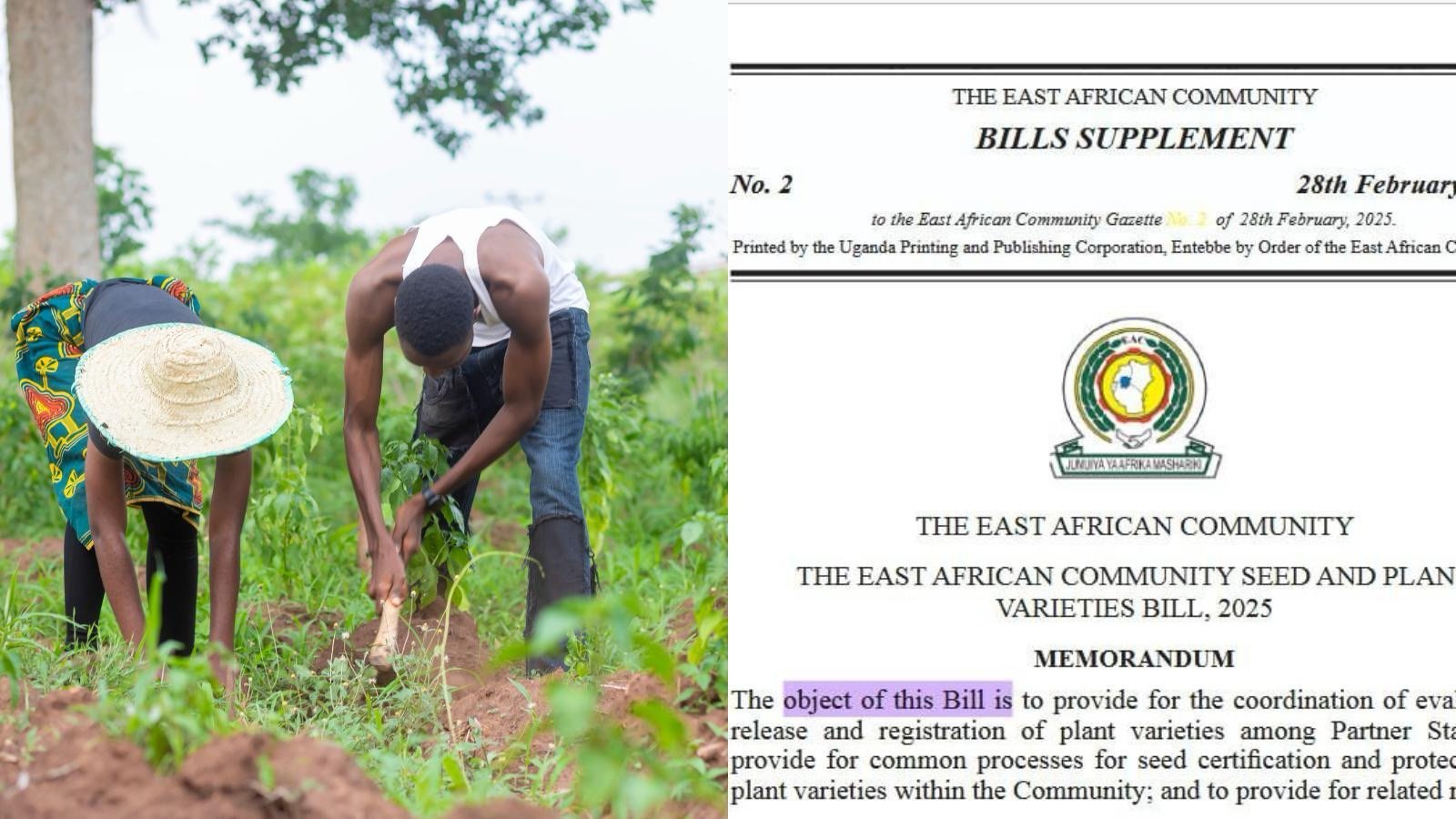
By the Witness Radio team
In Africa, farmers and civil society organizations are urgently warning about the adverse effects of existing policies on agrobiodiversity. These policies aim to erode centuries-old traditions of seed saving and exchange, effectively undermining seed sovereignty and intensifying dependency on commercial seed companies.
The struggle over seed sovereignty, particularly the rights of smallholder farmers, has become one of the most pressing issues for the continent’s agricultural future. As governments introduce new seed laws, such as the proposed East African Seed and Plant Varieties Act Bill of 2024, the preservation of cultural seeds and the rights of smallholder farmers are at stake.
The Communications and Advocacy Officer at Kenya’s Seed Savers Network, Tabitha Munyeri, notes that this has heightened monoculture, thereby significantly reducing the focus on indigenous plant varieties.
“There’s a lot of loss of agrobiodiversity with people focussing on a few foods, a few crops, leaving out so many other essential crops that have sustained humankind for generations and it is also important because it is coming at a time where we are having a lot of also conversations around different seed laws that are coming up for example within the EAC we see that there is the seed and plant varieties bill of 2024 and we are looking at it as a huge setback and there is need for us to create awareness around even the policies that exist.”
She further argues that there is a need to raise awareness and sensitise farmers to the existing policies so that they can understand their effects on agrobiodiversity.
“Even for Kenya we have been having punitive seed laws for the longest time but now we are happy that courts of law are reviewing the law, but we still think that there is need to create a lot of advocacy around the seed laws and what they really mean to farmers because some of them do not understand, some of them are not even interested but once they get to know what it means and the impacts that the laws have on them then they are also able to become more vocal and more involved in the process.” She says.
Farmers in Africa have been the custodians of agricultural biodiversity, developing and maintaining numerous varieties of crops that are suited to local soils and climates. However, over the last few decades, the focus on farming has drastically declined to a handful of “high-yield” crops and imported hybrid varieties, leaving out the diverse indigenous seeds that have sustained communities through droughts, pests, and diseases.
Munyeri warns that this decline in agrobiodiversity is accelerating, driven not merely by market pressures, but by restrictive laws that criminalise and discourage traditional seed-saving practices.
In Kenya, where smallholder farmers supply more than 80 percent of the country’s food, seed systems have long depended on the informal exchange of seeds within communities. Small-hold farmers have relied on these systems to share, adapt, and innovate with seeds suited to their local conditions. However, existing laws have tended to favour the formal sector, requiring seed certification, variety registration, and compliance with intellectual property protections that most small-scale farmers cannot afford.
The 2024 Seed and Plant Varieties Act Bill, currently under discussion in several East African countries, has sparked significant controversy. It seeks to modernize agriculture and align national systems with international standards. However, smallholder farmers and critics contend that it allows corporate control over genetic resources, limiting farmers’ autonomy and threatening biodiversity. Under such a framework, only registered seed varieties can be legally traded or exchanged, effectively outlawing the informal seed networks that have sustained rural communities for centuries.
If smallholder farmers lose their rights to exchange and cultivate indigenous varieties, they may also lose control over their food systems. Dependence on improved seeds necessitates purchasing new stock each planting season, eroding self-reliance and increasing vulnerability to market fluctuations.
This awareness gap is what the Seed Savers Network hopes to address. Through training programs and advocacy initiatives, including its recently concluded regional boot camp, the organization equips participants from across Africa with knowledge about seed laws, biodiversity, and policy engagement.
Related posts:
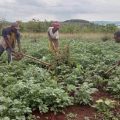
 Seed Boot Camp: A struggle to conserve local and indigenous seeds from extinction.
Seed Boot Camp: A struggle to conserve local and indigenous seeds from extinction.
 The EAC Seed & Plant Varieties Bill, 2025, is a potential threat to smallholder farmers, as it aims to disengage them from the agriculture business, according to experts.
The EAC Seed & Plant Varieties Bill, 2025, is a potential threat to smallholder farmers, as it aims to disengage them from the agriculture business, according to experts.
 CSOs and Smallholder farmers are urgently convening to scrutinize the EAC Seed & Plant Varieties Bill, 2025.
CSOs and Smallholder farmers are urgently convening to scrutinize the EAC Seed & Plant Varieties Bill, 2025.
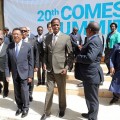 African governments are giving in to corporate pressure and undermining local seed systems – report
African governments are giving in to corporate pressure and undermining local seed systems – report
MEDIA FOR CHANGE NETWORK
Lands ministry rejects call to save over 300 Masaka residents facing eviction
Published
1 week agoon
November 5, 2025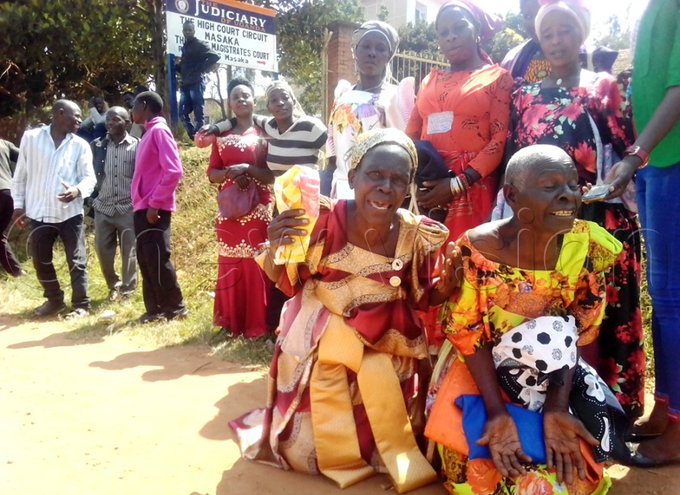
Over 300 families now face displacement, with the landlords’ legal team, Solis Advocates, having served eviction notices in 2021. (Credit: Dismus Buregyeya)
Lands state minister Joseph Mayanja and Minister Judith Nabakoba ruled out further administrative intervention, citing a 2019 court ruling that declared the residents had encroached on land owned by Masaka Jaggery Mills Ltd.
Lands state minister Joseph Mayanja and Minister Judith Nabakoba ruled out further administrative intervention, citing a 2019 court ruling that declared the residents had encroached on land owned by Masaka Jaggery Mills Ltd.The conflict stems from a 2019 ruling by Masaka chief magistrate Deo Ssejjemba, which sided with landlords Joseph Matovu and Methodius Kasujja in their eviction bid against the locals.
The court’s decision, upheld after residents withdrew an appeal in 2021, set the stage for the current standoff.
Despite this, the affected families, many of whom lost homes, crops, and plantations, petitioned the President in 2021, prompting former Vice-President Edward Ssekandi and the State House legal teams to intervene.
However, Mayanja emphasised that all avenues for mediation had been exhausted.
“The matter has been conclusively resolved through legal and administrative processes. No further interventions are justified,” he stated in a letter dated October 28, 2025, rejecting a last-minute plea for a site visit.
Unresolved
Nabakoba confirmed that 105 families received compensation between shillings 300,000 and 12 million from the landlords in 2021 after signing agreements.
However, a ministry report revealed 215 families remain uncompensated, pending verification of their claims.
“We closed the mediation process when the majority accepted the settlement,” Nabakoba said. However, locals like Vincent Mugerwa, leader of the Kasanje Bibanja Owners Association, denounced the payouts as “peanuts,” citing offers as low as shillings 800,000 per acre.
The dispute has drawn high-level attention, including from legislator Joanita Namutawe, who petitioned Parliament, and Prime Minister Robina Nabanja, who met with security officials in Masaka last week. Despite these efforts, the lands ministry insists the case is closed.
Residents, however, contest the land’s ownership history, alleging irregularities in transfers from the original owners, the Masaka Jaggery Mills, to current landlords. Title documents show the land was registered under Freehold Volume 59 Folio 11, transferred to Joseph Bukenya in 2021, before passing to Methodius Kasujja.
Facing eviction
Over 300 families now face displacement, with the landlords’ legal team, Solis Advocates, having served eviction notices in 2021.
The Prime Minister’s office received a fresh petition on October 31, detailing the residents’ grievances, including destroyed property and inadequate compensation.
Original Source: New Vision
Related posts:

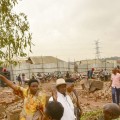 Outcry as Court Orders Eviction of 500 Families in Masaka
Outcry as Court Orders Eviction of 500 Families in Masaka
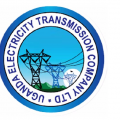 Electricity Transmission Company holds titles in Masaka as residents point to foul play
Electricity Transmission Company holds titles in Masaka as residents point to foul play
 Residents in Nakaseke district woke up to eviction notice amid COVID-19 lock-down land eviction directives.
Residents in Nakaseke district woke up to eviction notice amid COVID-19 lock-down land eviction directives.
 Uganda’s top Lands Ministry official has been arrested and charged with Corruption and Abuse of Office, a significant event that will have far-reaching implications for land governance in the country.
Uganda’s top Lands Ministry official has been arrested and charged with Corruption and Abuse of Office, a significant event that will have far-reaching implications for land governance in the country.
MEDIA FOR CHANGE NETWORK
Report reveals ongoing Human Rights Abuses and environmental destruction by the Chinese oil company CNOOC
Published
1 week agoon
November 3, 2025
By Witness Radio team.
Three years into the Kingfisher oil and gas extraction project, the situation in Kikuube District is dire. Despite repeated warnings and criticism from human rights and environmental organizations, the impact on the local population remains intolerable.
In 2024, the Environment Governance Institute Uganda (EGI) and Climate Rights International (CRI) independently published reports on the Kingfisher oil production project. A year later, in September 2025, these two influential organizations united their efforts to produce a follow-up report, which revealed even more alarming results.
The report titled “Extortion, Coercion, and Impoverishment. Human Rights Abuses and Governance Failures in the China National Offshore Oil Corporation’s (CNOOC) Kingfisher Oil and Gas Project” paints a grim picture. It shows that the hardships and abuses faced by residents of the China National Offshore Oil Corporation (CNOOC) Uganda Ltd. are not isolated incidents, but an ongoing series of violations.
Alongside the larger Tilenga project and the East African Crude Oil Pipeline (EACOP), the Kingfisher project is a crucial component of the extensive fossil fuel extraction operation in Uganda, which has been ongoing since 2017. The most important players involved are the French company TotalEnergies, the Tanzania Petroleum Development Corporation (TPDC), the Uganda National Oil Company (UNOC), and the Chinese energy giant CNOOC. While a subsidiary of TotalEnergies is implementing the Tilenga project, CNOOC serves as the executing partner for the Kingfisher project.
Last year’s reports demonstrated the immense environmental damage caused by the Kingfisher project. The Climate Accountability Institute predicted that the entire Ugandan oil production project would increase the country’s emissions. All of the projects will contribute significantly to global warming and, like all new fossil fuel extraction projects, are incompatible with the Paris Agreement’s 1.5 °C warming target.
In Kikuube district, oil drilling activities along the Lake Albert shoreline have allegedly resulted in the demolition of vegetation, increased sediment runoff, and chemical leaks over the last year, leading to the loss of breeding grounds for the local fish population, which is the basis of the livelihood for most local communities. Moreover, visible water pollution is an increasing threat to public health, as the lake is the only available water source for many residents.
Most households in villages bordering the project lack the funds to afford clean water or even medication, as they are experiencing a severe loss of income. Access to the area surrounding the project, including Nsonga, Nsuzu A, Nsuzu B, Kiina, and other nearby villages, is tightly controlled by security forces, like the Counter-Terrorism Police, the regular Traffic Police, and joint UPDF and Saracen Private Security company patrols. These enforce unannounced daily curfews by threatening and beating villagers encountered out of their homes after 6 or 7 pm, which results in a decrease in earnings for street vendors, whose main trading hours are often in the evening.
Fishing and fish trading – the primary sources of employment in the area – are also suffering greatly from the situation controlled by the company. Every two weeks, fishermen are required to pay 200,000 UGX in fishing fees. Fish traders – most of whom are women or youth – also must pay fees for their goods when passing through security checkpoints, which they often cannot afford. None of these fees levied by the security forces are receipted or even explained.
In addition to the physical restrictions, there is the ongoing loss of land. The company continues to take over communal land in the communities, forcibly evicting former residents without compensation.
Violent attacks for non-compliance with the new rules and fees are not uncommon and violate international human rights laws. In addition, there has been a disturbing increase in sexual and gender-based exploitation and abuse towards particularly vulnerable women. Many lose their sources of income due to the changed conditions and are forced into prostitution. The result is an increase in teenage pregnancies and school dropouts.
While the entire oil production project has been repeatedly criticized for human rights violations and illegal evictions, CNOOC’s actions are particularly egregious. Unlike other comparable projects, the company has never published a Resettlement Action Plan (RAP) setting out compensation requirements and plans for restoring livelihoods. However, this is a necessary measure according to Ugandan and international standards. Although CNOOC has officially committed to developing an accessible grievance mechanism for community members, the residents interviewed for the report are not aware of any such mechanism.
Although arbitrary violence and sexual assaults against women have decreased since a new commanding officer of the local Uganda Peoples’ Defense Forces (UPDF) was appointed, restrictive military control over the area and its inhabitants remains oppressive. Even under the new commander, Mubingwa Moses, residents continue to be restricted in their traditional way of life and work by opaque rules. The systematically imposed fees further exacerbate the situation of those affected and can only be described as exploitation.
The report by EGI and CRI makes a fundamental demand: “Uganda’s oil development is perpetuating climate, environmental, and human rights harms in violation of both national and international law and should be discontinued”. Furthermore, it explains in detail what is specifically needed to change the situation for those affected. The demands include conducting an independent and transparent investigation into the documented human rights violations, environmental degradation, and socio-economic impacts.
An independent body should examine all activities and suspend them until the situation is resolved. The primary demand is to ensure reparations and corporate accountability. CNOOC is expected to adopt a strict zero-tolerance policy regarding human rights violations, violence, and corruption, and to provide accessible and effective grievance procedures and compensation for those affected. In this regard, an appeal is made in particular to state and international institutions to monitor and enforce the promises made by the company.
Related posts:

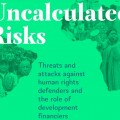 Development financiers fuel human rights abuses – New Report
Development financiers fuel human rights abuses – New Report
 StopEACOP Coalition warns TotalEnergies and CNOOC investors of escalating ‘financial and reputational’ Risks
StopEACOP Coalition warns TotalEnergies and CNOOC investors of escalating ‘financial and reputational’ Risks
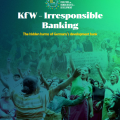 A German Bank is under intense scrutiny for its irresponsible banking practices, which have been directly linked to displacement and human rights abuses.
A German Bank is under intense scrutiny for its irresponsible banking practices, which have been directly linked to displacement and human rights abuses.
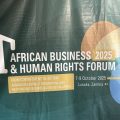 The 4th African Forum on Business and Human Rights: The rapidly escalating investment in Africa is urgently eroding environmental conservation and disregarding the dignity, the land, and human rights of the African people.
The 4th African Forum on Business and Human Rights: The rapidly escalating investment in Africa is urgently eroding environmental conservation and disregarding the dignity, the land, and human rights of the African people.

Climate wash: The World Bank’s Fresh Offensive on Land Rights

Africa’s Land Is Not Empty: New Report Debunks the Myth of “Unused Land” and Calls for a Just Future for the Continent’s Farmland

Discover How Foreign Interests and Resource Extraction Continue to Drive Congo’s Crisis

Seed Sovereignty: Most existing and emerging laws and policies on seeds are endangering seed saving and conservation on the African continent.

StopEACOP Coalition warns TotalEnergies and CNOOC investors of escalating ‘financial and reputational’ Risks

Oil palm tree growing in Uganda: The National Oil Palm Project is threatening to evict hundreds of smallholder farmers to expand its operations.

New! The Eyes on a Just Energy Transition in Africa Program is now live on Witness Radio.

Know Your Land rights and environmental protection laws: a case of a refreshed radio program transferring legal knowledge to local and indigenous communities to protect their land and the environment at Witness Radio.

Innovative Finance from Canada projects positive impact on local communities.
Over 5000 Indigenous Communities evicted in Kiryandongo District
Petition To Land Inquiry Commission Over Human Rights In Kiryandongo District
Invisible victims of Uganda Land Grabs
Resource Center
- REPARATORY AND CLIMATE JUSTICE MUST BE AT THE CORE OF COP30, SAY GLOBAL LEADERS AND MOVEMENTS
- LAND GRABS AT GUNPOINT REPORT IN KIRYANDONGO DISTRICT
- THOSE OIL LIARS! THEY DESTROYED MY BUSINESS!
- RESEARCH BRIEF -TOURISM POTENTIAL OF GREATER MASAKA -MARCH 2025
- The Mouila Declaration of the Informal Alliance against the Expansion of Industrial Monocultures
- FORCED LAND EVICTIONS IN UGANDA TRENDS RIGHTS OF DEFENDERS IMPACT AND CALL FOR ACTION
- 12 KEY DEMANDS FROM CSOS TO WORLD LEADERS AT THE OPENING OF COP16 IN SAUDI ARABIA
- PRESENDIANTIAL DIRECTIVE BANNING ALL LAND EVICTIONS IN UGANDA
Legal Framework
READ BY CATEGORY
Newsletter
Trending
-

 MEDIA FOR CHANGE NETWORK2 weeks ago
MEDIA FOR CHANGE NETWORK2 weeks agoSeed Boot Camp: A struggle to conserve local and indigenous seeds from extinction.
-

 MEDIA FOR CHANGE NETWORK1 week ago
MEDIA FOR CHANGE NETWORK1 week agoReport reveals ongoing Human Rights Abuses and environmental destruction by the Chinese oil company CNOOC
-

 SPECIAL REPORTS AND PROJECTS1 week ago
SPECIAL REPORTS AND PROJECTS1 week agoThe Environmental Crisis Is a Capitalist Crisis
-
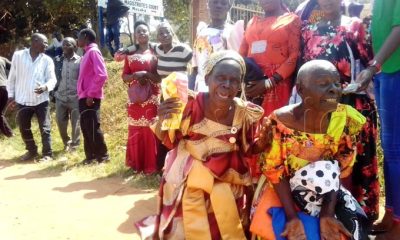
 MEDIA FOR CHANGE NETWORK1 week ago
MEDIA FOR CHANGE NETWORK1 week agoLands ministry rejects call to save over 300 Masaka residents facing eviction
-

 SPECIAL REPORTS AND PROJECTS1 week ago
SPECIAL REPORTS AND PROJECTS1 week agoGlobal use of coal hit record high in 2024
-
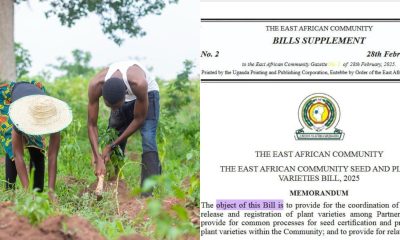
 MEDIA FOR CHANGE NETWORK2 days ago
MEDIA FOR CHANGE NETWORK2 days agoSeed Sovereignty: Most existing and emerging laws and policies on seeds are endangering seed saving and conservation on the African continent.
-
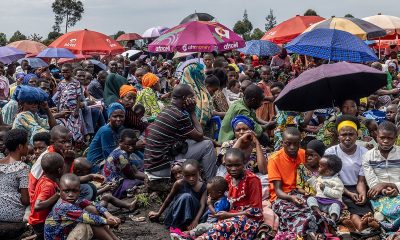
 NGO WORK1 day ago
NGO WORK1 day agoDiscover How Foreign Interests and Resource Extraction Continue to Drive Congo’s Crisis
-
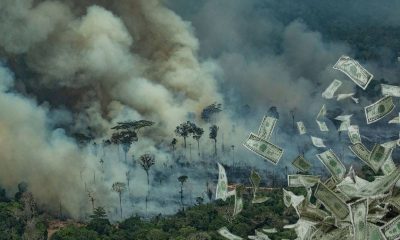
 NGO WORK51 minutes ago
NGO WORK51 minutes agoClimate wash: The World Bank’s Fresh Offensive on Land Rights

